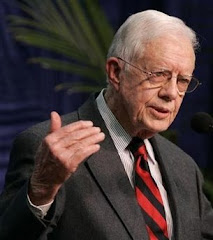www.hks.harvard.edu
The Iraq and Afghanistan conflicts, taken together, will be the most expensive wars in US history – totaling somewhere between $4 to $6 trillion.
The Financial Legacy of Iraq and Afghanistan: How Wartime Spending Decisions Will Constrain Future National Security Budgets Faculty Research Working Paper Series
Linda J. Bilmes
Harvard Kennedy School
March 2013
RWP13-006
Visit the HKS Faculty Research Working Paper series at: http://web.hks.harvard.edu/publications
The views expressed in the HKS Faculty Research Working Paper Series are those of the author(s) and do not necessarily reflect those of the John F. Kennedy School of Government or of Harvard University. Faculty Research Working Papers have not undergone formal review and approval. Such papers are included in this series to elicit feedback and to encourage debate on important public policy challenges. Copyright belongs to the author(s). Papers may be downloaded for personal use only.
1
The Financial Legacy of Iraq and Afghanistan: How Wartime Spending Decisions Will Constrain Future National Security Budgets
Linda J. Bilmes
Harvard University
Abstract: The Iraq and Afghanistan conflicts, taken together, will be the most expensive wars in US history – totaling somewhere between $4 to $6 trillion. This includes long-term medical care and disability compensation for service members, veterans and families, military replenishment and social and economic costs. The largest portion of that bill is yet to be paid. Since 2001, the US has expanded the quality, quantity, availability and eligibility of benefits for military personnel and veterans. This has led to unprecedented growth in the Department of Veterans Affairs and the Department of Defense budgets. These benefits will increase further over the next 40 years. Additional funds are committed to replacing large quantities of basic equipment used in the wars and to support ongoing diplomatic presence and military assistance in the Iraq and Afghanistan region. The large sums borrowed to finance operations in Iraq and Afghanistan will also impose substantial long-term debt servicing costs. As a consequence of these wartime spending choices, the United States will face constraints in funding investments in personnel and diplomacy, research and development and new military initiatives. The legacy of decisions taken during the Iraq and Afghanistan wars will dominate future federal budgets for decades to come.
Introduction
One of the most significant challenges to future US national security policy will not originate from any external threat. Rather it is simply coping with the legacy of the conflicts we have already fought in Iraq and Afghanistan.
This legacy is debt - promises and commitments that extend far into the future. The years of conflict have left America still burdened with heavy costs, even with the ground combat phase drawing to a close. These costs include the immediate requirements to provide medical care for the wounded, as well as the accrued liabilities for providing lifetime medical costs and disability compensation for those who have survived injuries. Long-term costs also include structural increases to the military personnel and health care systems; depreciation on military equipment and weaponry; restoring the military, Reserves and National Guards to pre-war levels of readiness; and maintaining a long-term military and diplomatic presence in the region. There are also far-reaching social costs, including the costs of impaired quality of life; families damaged and careers terminated; as well as economic and financial costs that have been estimated (with Joseph E. Stiglitz) in previous writings1.
1 Joseph E. Stiglitz and Linda J. Bilmes have written extensively on the long-term costs of war. See: The Three Trillion Dollar War: The True Cost of the Iraq Conflict, W.W. Norton: 2008; Linda J. Bilmes and Joseph E. Stiglitz, “The long-term costs of conflict: the case the Iraq War”, in The Handbook on the Economics of Conflict (Eds. Derek L. Braddon and Keith Hartley, Edward Elgar, Edward Elgar Publishing: 2011) and “Estimating the costs of war: Methodological issues, with applications to Iraq
2
The US has already spent close to $2 trillion in direct outlays for expenses related to Operation Enduring Freedom (OEF), Operation Iraqi Freedom (OIF) and Operation New Dawn (OND). This includes direct combat operations, reconstruction efforts, and other direct war spending by the Department of Defense (DoD), State Department, Department of Veterans Affairs (VA) and Social Security Administration2.
However, this represents only a fraction of the total war costs. The single largest accrued liability of the wars in Iraq and Afghanistan is the cost of providing medical care and disability benefits to war veterans. Historically, the bill for these costs has come due many decades later. The peak year for paying disability compensation to World War I veterans was in 1969 – more than 50 years after Armistice. The largest expenditures for World War II veterans were in the late 1980s3. Payments to Vietnam and first Gulf War veterans are still climbing. The magnitude of future expenditures will be even higher for the current conflicts, which have been characterized by much higher survival rates, more generous benefits, and new, expensive medical treatments. The US has also expanded veteran’s programs, made it easier to qualify for some categories of compensation, and invested in additional staff, technology, mental health care, medical research and other services designed to improve the situation of newly returning veterans.
The percentage of service members who have required medical care from the Pentagon and VA systems, and who have claimed benefits from the VA and the Social Security Disability Insurance program (SSDI) has risen to unprecedented levels. More than half of the 1.56 million troops who have been discharged to date have received medical treatment at VA facilities and been granted benefits for the rest of their lives4. The costs of providing for these veterans, however, are only a portion of the total accruing personnel and health care costs for the military. Military members and their families are eligible for health coverage through the TRICARE system, which has been growing at an even faster rate than the VA health care system. These accrued wartime liabilities – which have already been incurred but not yet paid – should be considered as an integral part of the overall war costs.
There are substantial social-economic costs that accompany these statistics. If fatalities are accounted for in the same way that that US civilian agencies value a life, the value of lives lost adds $44.6 billion to the cost of the wars. This is the difference between the “Value of a Statistical Life” per life lost, compared with the actual budgetary cost to the Pentagon of paying life insurance and a “death gratuity” to survivors5. Other social economic costs arise from the
and Afghanistan” in the Oxford Handbook of the Economics of Peace and Conflict. (Eds. Michelle Garfinkel and Stergios Skaperdas, Oxford University Press: 2012).
2 Amy Belasco. The Cost of Iraq, Afghanistan and Other Global War on Terror Operations since 9/11, CRS, RL 33110, March 29, 2011, estimates $1.4 trillion through 2012. (The $2 trillion figure is updated for 2012-2013 expenditures, and including additional VA, DoD, Social Security spending and interest paid on money borrowed for the wars.)
3 Ryan D. Edwards. “U.S. War Costs: Two Parts Temporary, One Part Permanent.” NBER Working Paper 16108 (2010); and Ryan D. Edwards, “A Review of War Costs in Iraq and Afghanistan” NBER Working Paper w16163 (July 2010). See also Institute of Medicine publications on long-term disability costs, including National Research Council. Returning Home from Iraq and Afghanistan: Preliminary Assessment of Readjustment Needs of Veterans, Service Members, and Their Families. Washington, DC: The National Academies Press, 2010.
4 "VA Benefits Activity, Veterans Deployed to the Global War on Terror" through September 2012, VBA Office of Performance Analysis and Integrity, November 2012.
5 The most significant cost that is associated in economics with lives lost is the “Value of Statistical Life” (VSL). There is a large literature of estimating this value. Government agencies routinely use estimates of the VSL in making decisions, such as
3
large number of service members whose lives have been disrupted by physical injuries or mental health disabilities. There are costs to the service members and to their families; in many cases, family members have needed to become full-time caregivers or to significantly alter their employment. These costs are not paid by the government, but are borne by the individuals, families and communities6.
The Pentagon also faces the task of replacing years of worn-out equipment, which will cost more than the amounts appropriated for this purpose. Equipment, materiel, vehicles and other fixed assets have depreciated at an estimated 6 times the peace-time rate, due to heavy utilization, poor repair and upkeep in the field, and the harsh conditions in the region. Even the logistics and cost of transporting equipment out of Afghanistan is predicted to cost billions7 . The US has also made long-term commitments to the security of Afghanistan including a “Strategic Partnership Agreement” signed by President Obama and Afghan President Hamid Karzai in 2012 to provide US support through 20148.
Finally, the decision to finance the war operations entirely through borrowing has already added some $2 trillion to the national debt, contributing about 20% of the total national debt added between 2001 and 20129. This level of debt is thus one of the reasons the country faces calls for austerity and budget cuts, which has already had an impact on the military budget through the across-the-board cuts (the “sequester”) that were allowed to take effect in 2013. The US has already paid $260 billion in interest on the war debt. This does not include the interest payable in the future, which will reach into the trillions10 .
This paper will focus on the costs of commitments we have made in four important areas during the Iraq and Afghanistan wars:
I. Veterans health care and disability compensation
II. Pentagon personnel and health care policies and benefits
III. Other Department of Defense costs and commitments
IV. Financing of the wars
The data presented here updates previous estimates for the care of Iraq and Afghanistan veterans based on actual reported data through year-end 2012 reports. It also estimates additional costs
weighing the costs and benefits of car or drug safety regulations. The Environmental Protection Agency estimates the VSL at $6.9 - $8.7 million. We have used the figure of $7.2 million, which is the mid-range of numbers used by government agencies. See Stiglitz and Bilmes, The Three Trillion Dollar War; and articles by W. Kip Viscusi and Joseph E. Aldy.
6 See: The Three Trillion Dollar War.
7 See interviews with Secretary Donald Rumsfeld (3/10/05) in which he estimated that US military equipment such as tanks, Bradley fighting vehicles and helicopters were being worn out at up to 6 times the peacetime rate; see interview with Deputy Secretary of Defense Ashton Carter (7/11/12) describing challenges of dismantling 400 bases and transporting 45,000 military vehicles including 14,000 Mine Resistant Ambush Protected (MRAP) trucks back from Afghanistan in difficult terrain.
8 President Obama and President Hamid Karzai signed a “Strategic Partnership Agreement” in May, 2012 that commits the US to assist Afghanistan with security through 2024. Most estimates place the financial obligation in the range of $8 to $10 billion annually.
9 Between 9/30/2001 and 9/30/2012, the total US debt grew from$5.8 trillion to $16.0 trillion (US Treasury). According to Ryan Edwards, post-9/11 war spending has increased indebtedness by $1.3 trillion, raised the ratio of public debt to GDP by 9–10 percentage points, and probably raised long-term interest rates by 30–35 basis points. “Post-9/11 War Spending, Debt, and the Macroeconomy”, Ryan D. Edwards, June 22, 2011 (Cost of War Project, Brown University).
10 Ryan D. Edwards, Ibid. (updated March 2013). The total interest on the war debt could reach $7 trillion, dwarfing all other costs, depending on interest rates, GDP, and the level of future borrowing.
4
that were not considered in previous estimates, including costs incurred by the Department of Veterans Affairs (VA) that are related to the conflict; costs for active-duty service members; Reservists, Guards and their families who have been using the department of defense health care system (TRICARE) including those who are wounded and being treated in military facilities; and costs to the Department of Defense for personnel, retirement, health care and military replenishment costs related to decisions made during the past decade11. (This paper does not update the macroeconomic analysis developed with Joseph Stiglitz in previous studies).
I. VETERANS HEALTH CARE AND DISABILITY
Approximately 2.5 million service men and women have served in Operation Iraqi Freedom (OIF), Operation New Dawn (OND), and/or Operation Enduring Freedom (OEF) in Afghanistan to date. There were 6658 US military fatalities as of March 8, 2013, not including contractors, coalition partners, Iraqi and Afghanistan partners, and civilians12. By September 2012, some 1.56 million US troops had returned home and left active duty, thereby becoming eligible for veterans medical care and benefits13 .
Veterans from Iraq and Afghanistan are utilizing VA medical services and applying for disability benefits at much higher rates than in previous wars. There are two cost streams associated with "service-connected" veterans: (a) the medical costs of caring for them over their life spans, and (b) the cash compensation and other benefits (such as housing loans and home and physical rehabilitation) that are awarded to eligible veterans and their survivors. In 2008, Stiglitz-Bilmes predicted14 that costs of both medical care and disability benefits for recent war veterans would grow enormously. We predicted that by 2012, some 41%-46% of new veterans would be enrolled in the VA health care system and that 39%-43% would have applied for disability benefits15. But the original Stiglitz-Bilmes estimates were far too low. The actual number of Iraq and Afghanistan veterans receiving government medical care has grown to more than 56% of the total. One out of every two veterans from Iraq and Afghanistan has already applied for permanent disability benefits16.
11 This paper does not update the macroeconomic analysis developed with Joseph E. Stiglitz previously. See The Three Trillion Dollar War and book chapters.
12 Department of Defense casualty status data as of March 8, 2013. The organization “icasualties” estimates 8074 total US, UK and coalition fatalities since 2001. According to GAO reports in 2010, at least 455 US contractors have been killed and 15,000 injured; this is likely to be an under-estimate. These may show up as additional costs to Medicare and the US health care system, but are not included in this study.
13 Veterans’ medical care is appropriated through the discretionary budget in the Veterans Health Administration (VHA). Disability benefits are a mandatory authorized entitlement once granted, and administered by the Veterans Benefit Administration (VBA). Some benefits are payable to all veterans regardless of their disability status, including five years of free medical care in the veterans health care system upon their discharge from active duty. Veterans can qualify for a range of compensatory benefits and stipends on approval from the medical and administrative apparatus of the VA. Additionally, veterans may be eligible to receive assistance from other government agencies, such as supplementary disability compensation from the Social Security Administration if they can no longer work.
14 The Three Trillion Dollar War, ibid.
15 In previous analyses we estimated based on two scenarios, a “best-case” scenario and a “moderate-realistic” scenario. The actual level of medical utilization and disability claims has far exceeded the higher of our estimates.
16 "VA Benefits Activity, Veterans Deployed to the Global War on Terror" through September 2012, VBA Office of Performance Analysis and Integrity, November 2012.
5
The costs are high due to the level of physical and mental suffering that has afflicted the troops from these wars. The official number of some 50,000 troops “wounded in action” obscures the scale of the health care situation. One-third of returning veterans are being diagnosed with mental health issues - suffering from anxiety, depression, and/or post-traumatic stress disorder (PTSD). More than 253,000 troops have suffered a traumatic brain injury (TBI) and, in many cases, concurrent with a PTSD diagnosis and complicating treatment and recovery17. The suicide rate in the Army has more than doubled, with many who attempted suicide suffering serious injuries. The mental health epidemic will increase both immediate and long-term costs. In addition to the spending for mental health clinics, hiring psychiatric personnel and paying higher disability benefits, research from previous wars has shown that these veterans are at higher risk for lifelong medical problems, such as seizures, decline in neurocognitive functioning, dementia and chronic diseases18.
The VA has processed millions of unique application claims but is still facing a substantial backlog. As a result of increases in workload, benefits and attempts to meet demand, the VA’s annual budget has risen, in real terms, from $61.4 billion in FY 2001 to $140.3 billion in FY 201319, growing from 2.5% to 3.5% of the total US budget. This reflects huge investments in personnel, clinics, programs, benefits, mental health, IT, women's health care, claims processing, expanded disability pay, and the decision to provide five years of free health care coverage to all newly returned veterans.
Veterans Medical Costs
The US has spent $23.6 billion during the period FY 2001 through FY 2013 in providing medical care to OEF/OIF/OND veterans. High medical use is the result of several factors including: a) high survival rates for seriously wounded troops; b) higher incidence of PTSD and other mental health ailments; c) more veterans willing to seek treatment for mental health and related problems; and d) more generous medical benefits, more presumptive conditions, and higher benefits in some categories.
17 Hannah Fischer, “U.S Military Casualty Statistics: Operation New Dawn, Operation Iraqi Freedom, and Operation Enduring Freedom”, CRS Report for Congress, RS22452, February 5, 2013.
18 See Hoge, C.W. et al., “Mental disorders among US military personnel in the 1990s: Association with high levels of health care utilization and early military attrition,” American Journal of Psychiatry, 159(9):1576-1583; see also work from the Veterans Health Research Institute. See also: Daniel Bertenthal, Beth Cohen, Charles Marmar, Li Ren and Karen Seal, 2009, “Association of cardiovascular risk factors with mental health diagnoses in Iraq and Afghanistan war veterans using VA health care,” JAMA 302 (5):489-492.; and Boscarino JA, 2008, “A prospective study of PTSD and early-age heart disease mortality among Vietnam veterans: implications for surveillance and prevention,” Psychosomatic Medicine, July, 70(6):668-7; Boscarino, JA, CW Forsberg and J Goldberg, 2010, “A twin study of the association between PTSD symptoms and rheumatoid arthritis,” Psychosomatic Medicine, June 72(5):481-6. (In the latter, a study of twin pairs showed that the highest PTSD sufferers were 3.8 times likely to have rheumatoid arthritis compared with the lowest sufferers. Spitzer has also shown increased incidence of angina, heart failure, bronchitis, asthma, liver and peripheral arterial diseases among PTSD sufferers). See also Judith Andersen, et al., 2010, “Association Between Posttraumatic Stress Disorder and Primary Care Provider-Diagnosed Disease Among Iraq and Afghanistan Veterans,” Psychosomatic Medicine 72.
19 See Table 1 in Christine Scott, "Historical Budget Authority for the Department of Veterans Affairs in Constant 2011 Dollars, FY1940 - FY 2012", CRS Report for Congress, RS22897, June 13, 2012; and “Department of Veterans Affairs FY2013 President’s Budget”, February 13, 2013.
6
Table 1: Estimated Veterans Spending 2001-2013
The Veterans Health Administration (VHA) has treated 866,181 (56%) of OEF/OIF/OND veterans for a wide range of medical conditions. The most common diagnoses include: diseases of the musculoskeletal system (principally joint and back disorders); mental health disorders; central nervous system and endocrine system disorders; as well as respiratory, digestive, skin, and hearing disorders20. Of this group, 29% has been diagnosed with PTSD. Most veterans have been treated for a variety of different conditions. There is virtually no difference between the former active duty service members and Reservists/Guards; with 56% of active duty and 55% of Reservist/Guards having obtained VA health care.
The costs of VA medical care include the direct costs of providing care to these individuals, through the extensive network of VA clinics, hospitals and contract medical support, as well as the costs of medical programs that the VA has initiated in recent years in response to specific health concerns from the recent conflicts. These include initiatives for studying, treating and monitoring PTSD among Iraq and Afghanistan veterans, and spending related to prosthetics for amputees, women veterans’ health, and traumatic brain injury (TBI).
The present value of the expected total medical care for OEF/OIF/OND veterans already committed to be delivered over the next forty years is projected to be $288 billion21.
Veterans Disability Costs
The US has spent $28.9 billion for disability benefits for OEF/OIF/OND veterans from FY 2001 through FY 2012. Including the projected costs for FY 2013, the total amount to date will be $35 billion. The high claims activity is related to better outreach and capacity at the VA; greater availability of information on the internet and through veterans service organizations (VSOs); more conditions that are presumptive in favor of the veteran; and other factors.
20 “Analysis of VA Health Care Utilization among Operation Enduring Freedom (OEF), Operation Iraqi Freedom (OIF) and Operation New Dawn (OND) Veterans” (October 1, 2001 -September 30, 2012), Epidemiology Program, Veterans Health Administration, Department of Veterans Affairs, January 2013.
21 The costs described here include the cost of veterans based on administrative records obtained from the VA. It does not include Vet Center data, which would increase the numbers if we had it. The evidence from previous wars shows that the cost of caring for war veterans rises dramatically over time as veterans get older and their medical needs grow. This does not include the cost of veterans beyond age 67, who will also be covered through Medicare, TRICARE for Life and other systems.
Total-Cum2001200220032004200520062007200820092010201120122013VA Medical23.60.10.20.20.40.81.122.93.83.64.14.4SS Disability4.40.10.250.380.450.50.60.70.70.7VA Disability34.90.10.30.51.21.62.42.93.55.35.35.76.2VA other71.50.00.00.00.00.00.04.75.38.911.712.813.614.5Totals134.30.00.20.50.71.72.78.610.615.721.422.424.125.8
7
As of September 2012, some 783,623 of OEF/OIF/OND veterans (50%) have filed disability claims with the VA, of whom 671,299 have been awarded service-connection so far, and 15,521 have been denied. (The rest are pending in the VA system)22.
These applications are complex, with an average claim requesting compensation for eight or more disabling conditions. The complexity of the claims is one of the factors that have led the VA to invest in more personnel and technology to attempt to process the claims more efficiently.
An estimated $4.4 billion has been paid out to severely disabled veterans through Social Security Disability Insurance. More than 30,000 OEF/OIF/OND veterans have been awarded 100% service-connection, which makes them automatically eligible to receive supplemental disability compensation from the Social Security system (SSDI)23. This includes, for example, 6,476 cases of severe penetrating brain injury, and 1,715 individuals with limb amputations24. There are more than 145,000 veterans who are 70%-90% service-connected, many of whom also qualify for SSDI. This would include, for example, some of the 42,063 cases of “moderate” traumatic brain injury.
The present value of the expected total veterans’ disability benefits already accrued for OEF/OIF/OND veterans and payable over the next forty years is projected to be $424.5 billion25.
Related Costs to the Department of Veterans Affairs (VA)
Certain portions of the cumulative growth of the VA budget (from $61 billion in 2001 to $140 billion 2013, in constant dollars) are the result of specific decisions, initiatives, programs, benefits and investments directly related to serving Iraq and Afghanistan veterans. These include:
Expenditures directly related to recent veterans, including readjustment counseling, fast-track processing for OEF/OIF/OND disability claims, hiring of thousands of new mental health professionals to staff clinics for veterans suffering from PTSD and other items serving the needs of recent veterans26.
Expenditures which have been undertaken largely due to the current conflict will benefit all veterans. The most costly of these are investments in benefits claims processing, including automating the disability claims process (which is currently paper-based), and hiring
22"VA Benefits Activity, Veterans Deployed to the Global War on Terror" through September 2012, VBA Office of Performance Analysis and Integrity, November 2012.
23 Ibid. Social Security provides disability compensation (SSDI) for individuals who cannot work due to disability. Veterans can receive both VA disability compensation and SSDI. Veterans who are service-connected at the 100% level automatically qualify for SSDI. Most veterans who are 90% service-connected, and many who are 70-80% would also qualify for this compensation.
24 Hannah Fischer, CRS, RS22452, ibid.
25 This does not include veteran’s education benefits under the GI Bill.
26 These are discussed in detail in the FY 2009 through FY 2013 VA budgets, and summarized in the "VA Budget Fast Facts" issued with the budget each fiscal year.
8
additional personnel to process disability claims. Congress has appropriated this money due to the VA's inability to cope with the huge influx of disability claims from both recent and earlier veterans27. The backlog has been the subject of numerous congressional hearings, GAO investigations, lawsuits and media attention. The VA spent $1.8 billion in 2010, $2.1 billion in 2011, $2.0 billion in 2012 and $2.2 billion in 2013 “to support improved benefits processing though increased staff, improved business processes and information technology enhancements". This spending is in addition to over $3.3 billion per year for each of the past four years "for a reliable and accessible IT infrastructure, a high-performing workforce, and modernized information systems"28.
In total VA has spent a cumulative sum of $71.5 billion on these war-related initiatives since 2001. Some of the spending will add to the structural base of the VA, particularly the costs related to additional personnel.
Total Projected Veterans Medical, Disability and Related Costs
The total costs stemming from Iraq and Afghanistan which may therefore be attributed to veterans to date is $134.3 billion. The present value of accrued costs – that is, future medical care and disability benefits already committed but not yet disbursed for OEF/OIF/OND veterans, is estimated at $836.1 billion29. This does not include costs associated with the GI Bill, which was enacted in 2008 to provide Iraq and Afghanistan veterans with education benefits on par with those provided to World War II veterans. The investment in education for veterans is likely to produce net economic benefits to the nation. It should be noted, however, that the bill will entail budgetary costs, both in direct payments and in administration.
27 It is reasonable to attribute this spending to the Iraq and Afghanistan wars, which have produced a huge upsurge in the number and complexity of disability claims. The VA has expanded eligibility, granted more presumptions to the veteran, increased outreach, liberalized the PTSD stressor definition, and consequently, it has received more than 1 million claims per year during each of the past three years (from all veterans). If not for the outcry among veterans, and the congressional and public support for them, it is unlikely that the VA would have been able to secure appropriations for this amount of funding at a time of rising deficits and austerity in most of government. These estimates also do not include VA capital investments, such as the construction that will serve all veterans but are primarily targeted toward those returning from Iraq and Afghanistan.
28 See VA Budget "Fast Facts", FY 2009-FY 2013
29 This figure is not estimated in government accounting. The U.S. consolidated balance sheet lists $1.3 trillion in liabilities for veteran’s compensation and burial benefits (for all veterans) but does not include medical care or pensions in its listing of liabilities. CBO typically projects forward only ten-years, with most focus on the near-term. In October 2010, CBO estimated that the cumulative health care costs for Iraq and Afghanistan veterans for the years 2011-2020 will be $40 billion to $54 billion and will rise steeply as the veterans get older. These estimates are consistent with the projections in this paper, however the CBO does not include the cost of disability benefits, Social Security disability, or other VA costs. The actuarial capability of the VA is weak, and has been the focus of criticism by the GAO and the Institute of Medicine. In 2009 GAO found that VA’s assumptions of the costs of long-term care were “unreliable” because the assumed cost increases were lower than VA’s actual spending experience. GAO-09-664T.
9
Table 2: Total Projected Veterans Medical and Disability Costs Already Spent/Accrued30
II. PENTAGON MEDICAL AND PERSONNEL COSTS
The costs associated with veterans are only a portion of the total accruing medical and personnel costs associated with the Iraq and Afghanistan wars. Since 2001, the Pentagon base budget (excluding money appropriated for war spending) has increased cumulatively by more than $1.3 trillion in constant dollars above the levels that were planned prior to 9/11. Much of this increase can be attributed to spending that was related directly or indirectly to Iraq and Afghanistan and the Global War on Terror (GWOT), and much of that is linked to expenditure patterns and decisions regarding personnel, pay and medical care.
Personnel and Health Care
The cost of military pay and allowances, along with those for military health care, make up about one-third of the Department’s budget and have been rising rapidly in recent years while the total end-strength of active duty service members has barely grown.
Military members and their families are eligible for health coverage through the TRICARE system. TRICARE includes the troops who are injured while serving in the war theatre (before they are discharged into the veterans system) and their families. TRICARE spending is likely to reach $56 billion in 2013, up from $18 billion in 2001, accounting for nearly 8% of the total US defense budget. TRICARE is now the fastest growing federal health program -- growing at a faster rate than Medicare, Medicaid, or VA health care.
30 Not including education benefits
Spent to datePV 2014-53VA Medical23.6287.6SS Disability4.442.3VA Disability34.9419.7VA Related 71.586.6134.3836.1Total $ Bn970.4
10
Table 3: Annual Growth Rate of federal health care programs 2001-2011
There are several reasons why much this growth can be attributed to the wars in Iraq and Afghanistan. These include:
1. Increasing participation in TRICARE
2. Increasing utilization of medical services and treatments by TRICARE members
3. Expanding TRICARE to Reservists and Guards
4. Rising profitability of TRICARE companies
5. Expanding TRICARE programs for retirees
1. Increasing participation in TRICARE
The Pentagon has kept the costs associated with TRICARE (co-pays, enrollment fees, deductibles, etc.) artificially low between 2000 and 2012 due to reluctance to raise fees during wartime. Individuals and families can purchase health insurance in TRICARE for a tiny fraction of the private sector rate. The out-of-pocket amount paid by TRICARE Prime recipients for a family of four actually decreased, in real terms, from $582 in 2001 to $460 in 2011. [See Table 4a] During the past decade, the market price of health insurance increased steeply, so the differential between paying for private health coverage compared with TRICARE tripled. Consequently, the portion of the total health care costs per individual that TRICARE was subsidizing increased; unsurprisingly, the participation rate among eligible active duty military and family members rose from 29% to 52%, while the percentage that carried private health insurance fell from 45% to 21%. [See table 4b]31 Although there has been a small increase in fees during FY 2013, there was substantial congressional opposition to this increase and it is unlikely that fees will go up again anytime in the near future32.
31 "Evaluation of the TRICARE Program: Access, Cost and Quality", FY 2012 Report to Congress, US Department of Defense.
32 As of October 1, 2012, TRICARE Prime enrollment fees for uniformed service retirees and families rose from $230-260 (individual) to $269.28 and from $460-520 (families) to $538.56.
$ Billion20012011CompoundAnnualGrowth Rate (CAGR)Medicaid$130$2767.8%Medicare(net)$217$4858.4%Veterans Medical$21$509.1%DoD Medical$18$5411.4%
11
Table 4a: TRICARE Prime premiums vs. Private Insurance 2001-2011
Per Capita Cost
Private Sector Health Insurance Costs
compared with beneficiary cost of TRICARE Prime
Table 4b: Increased Participation in TRICARE and decrease in Private insurance enrollment
Per Capita Cost
Eligible military personnel are shifting into TRICARE, away
from private insurance
12
2. Increasing utilization of medical services and treatments by TRICARE members
The number of enrollees and the volume of medical visits, procedures and claims all increased
during the period. Overall, TRICARE added 400,000 new beneficiaries between 2004 and 2011,
and the number of annual claims processed grew steadily from 112 million in 2004 to 195
million claims in 2011. [See Table 4]33 Many of these claims were directly war-related, with
much higher utilization by the active duty services and families. For example, since 2004,
behavioral health counseling for troops/families rose by 65% and counseling for children of
troops rose by 45%. Medical visits from active duty troops due to joints and musculoskeletal
problems grew from 2.8 million in 2005 to 3.9 million by 200934.
The estimated costs for those who are still serving are large and growing. This includes service
members who are wounded on the battlefield and treated within the military medical system; for
example, in battlefield medical centers or military hospitals such as Walter Reed National
Military Medical Center (WRNMMC) in Bethesda. In the past year alone, dozens of NATO
troops have been killed or wounded by members of the Afghan forces (or attackers wearing their
uniforms) in so-called "green on blue" attacks. The worst casualties of the entire period have
occurred during the Afghanistan surge. Walter Reed is treating hundreds of recent amputees and
severe casualties -- the hospital received 100 amputees for treatment during 2010; 170 amputees
in 2011; and 107 amputees in 201235. The Marines have suffered an especially high toll36.
Table 5: Increase in TRICARE claims processed 2001-2012
Number of Claims Processed doubled from 2001-2012
Experience of Care
33 Military Health Service, TRICARE 2012
34 Ibid.
35 Data from TRAC2ES as of February 28, 2010, WRNMMC
36 For example, 25 Marines died and more than 180 were wounded, including many with multiple amputations, from a single
battalion in the Fifth Marine Regiment out of Camp Pendleton, California, while it was deployed to Helmand Province in 2010.
13
3. Expanding TRICARE to Reservists and Guards
TRICARE was expanded to the Guards and Reserves who had served in the war, establishing a new program called “TRICARE Reserve Select (TRS)”. This was a direct response to the fact that a large percentage of those who have served in OEF/OIF/OND have been drawn from Reservists and Guards. Of those who have already been discharged, 43% (674,688) are Reservists/Guards and 882,338 (57%) are active duty37. The TRS program was originally designed for Reservists and Guards who lacked a civilian option, but it has become a default plan for many. The participation rate (and the cost) is likely to increase further when the mandates in the Affordable Care Act take effect. RAND Corporation recently projected that this program will grow significantly in the next two years, as TRS will become by far the cheapest option for those able to take advantage of it. Currently, some 30% of Reservists and Guards are not insured. TRS premiums will be less expensive for these individuals than purchasing health insurance in the private market, through state subsidized health exchanges or paying a penalty for not having insurance38.
4. Rising profitability of TRICARE companies
The private sector health insurance companies that comprise TRICARE have proven to be major beneficiaries of the largesse in military spending over the past decade, experiencing large increases in enrollments, revenues and profits. Taken together, the three companies that have administered TRICARE (Humana, Health Net and TriWest Health Care39) would rank as the 6th largest contractor for the Department of Defense -- bigger than KBR, and just below the biggest contracting names such as Lockheed, Northrup Grumman and Boeing. These firms account for some of the highest profits earned by any company in the war, for example, Humana’s TRICARE premium fee revenues increased from $2.8 billion to $4.2 billion between 2001 and 2010, as the company shifted a larger percent of its operations into the government sector40.
This situation is hardly surprising, considering that Congress was appropriating gigantic sums to the Department of Defense for the war, through so-called "emergency" funds, which have little oversight. The TRICARE providers had no incentive to contain costs. The DoD was mostly concerned with the availability and quality of medical care for its troops and reimbursed whatever was requested. The TRICARE beneficiaries, with heavily subsidized co-pays, also have no incentive to economize. An analysis conducted by TRICARE shows that recipients have 30%-40% higher medical utilization rates than civilians and use 30% more prescriptions per year than civilian HMO users (see Table 6)41.
37 “Analysis of VA Health Care Among OEF/OIF/OND Veterans, January 2013, Epidemiology Program, Post-Deployment Health Group, VHA” ibid.
38 Susan D. Hose. Healthcare Coverage and Disability Evaluation for Reserve Component Personnel: Research for the 11th Quadrennial Review of Military Compensation. Santa Monica, CA: RAND Corporation, 2012. http://www.rand.org/pubs/monographs/MG1157.
39 Last year, TRICARE decided to shift its $20.5 billion contract for western states from TriWest to UnitedHealth Group Inc. (UNH), the nation’s largest health insurer by revenue. This will take effect starting April 1, 2013.
40 EDGAR (SEC Company database) filings and research
41 Military Health Service, TRICARE 2012
14
Table 6: Prescription Drug Use TRICARE vs. Civilian HMO
5. Expanding TRICARE programs for retirees
The Pentagon expanded benefits for military retirees, in part because the wartime appropriations climate helped the department persuade Congress to agree to a number of longstanding requests. These included adding “concurrent receipt” – an expensive benefit that permitted working age military retirees who also qualify for VA disability benefits to accept both.
TRICARE also expanded the “TRICARE for Life” (TFL) Program, which was enacted in 2001, to augment Medicare for military retirees over age 65 and their families. Military service members are eligible to retire after 20 years, and TFL is a popular benefit that has grown rapidly. Unlike Medicare, TRICARE can negotiate for higher rates to pay its providers (regardless of Medicare rates), so there is less likelihood that providers will choose not to accept TFL patients. Like other TRICARE fees, the enrollment fees for TFL is low and it provides additional security for retired military service members and their families.
These decisions will increase the base Pentagon budget permanently and it will continue to grow quickly as the demographics of the population shift more people into these categories. While neither of these decisions was a direct cost of the war, both should rightly be considered as indirect costs. The scale of war appropriations, combined with the desire to improve benefits for the all-volunteer force, created an environment in which it was possible for DoD to enact concurrent-receipt, which it had been advocating for decades. The launch of TFL and its heavily subsidized prices was also made easier by the wartime environment.
Potential Impact of health care expenditures on DoD budget
The Pentagon budget is projected to decrease over the next decade. Assuming the continuation of the sequestration path that went into effect in 2013, the total DoD budget decreases even further.
15
But the growth of TRICARE will significantly eat into the base budget. TRICARE currently
consumes 8% of the defense budget; if it continues to grow at the current rate, it will consume
18% of the total DoD budget by 2017, and the core DoD budget not related to medical costs will
shrink from 16% of the total US budget outlays to 10%. [See Table 7]
Table 7: Potential Growth of DoD Medical Costs vs. Base
Medical costs will shrink “core” defense spending
32
Core DoD projected to decline as
Percent of Total US Budget
Medical grows from
8% to 18% of DOD
budget under
sequestration
Personnel Costs
The second main area of increased military base cost is in pay and benefits. When the Army and
the Marines faced recruiting difficulties in 2004, the Pentagon made a number of changes to
boost recruiting to the all-volunteer force. These included relaxing some standards for education
and fitness among recruits, increasing the number of recruiters, and increasing pay. Congress
authorized pay raises above Pentagon request levels.
A key decision was to adopt higher pay scale indexing. Previously, pay increases were linked to
the employment cost index (ECI). The new method was to link pay scales to the ECI plus 0.5%.
This pay enhancement tool was made possible by the overall surge in war spending, but it was
not funded through wartime appropriations and it has added another layer of cost to the DoD
base. In the FY 2013 and 2012 budget requests, DoD has asked Congress to roll back these
benefits, but they are politically untouchable.
Another important cost was activating Reservists and Guards and paying them on a full-time
basis42. This was an extra, incremental expense. In total, more than 670,000 Reservists and
Guards have been deployed in the Iraq and Afghanistan wars. In addition, these troops were on
average five years older and with families, so they were in most cases entitled to receive higher
levels of special adjustment pay, combat pay, parental and other benefits.
42 Reservists and Guards typically are paid for one weekend per month plus special training sessions. Service in the National
Guards is paid by the states. If the Guard is called up by the Governor of that state, the state pays. The federal government pays
only if the Guard is called to active national duty, as was the case for Guards who were called to serve in Iraq and Afghanistan.
16
One significant personnel cost that is likely to grow in the future as a consequence of the wars is the military retirement pension system. The US now pays over $100 billion annually in generous military retirement benefits for those who have served for at least 20 years. There is no pension at all for those who have served for fewer than 20 years. In the Iraq and Afghanistan conflicts, more than 85% of the troops, including nearly all the front-line infantry troops-- have not served for that long43. Therefore they are not eligible to receive any kind of pension or stipend for their service. The current all-or-nothing system was designed after World War II and is ill-suited to today's veterans in the all-volunteer force. Many respected military analysts, including Dr. Lawrence Korb of the Center for American Progress, have pointed out that it makes little sense to design a system that fails to compensate more than 80% of those who fight.
One short-term result of this inequity is that it has placed additional pressure on the veterans’ disability benefit system - which in effect, provides a small supplementary income for many returning troops. Many Iraq and Afghanistan veterans have given up several years of their lives, spent time away from their families, sustained minor to moderate injuries, and suffered from quality of life impairment in a number of ways. However, unlike the British and Australian approach, neither the military pension system nor the veterans system in the US compensates for lower quality of life44. It is therefore plausible to believe that the veterans’ disability benefit has become in some cases a proxy for such compensation, and that some veterans apply for multiple disability benefits to secure some level of permanent income supplement.
*****
The majority of these costly measures – including supplementary pay increases, expansion of TRICARE subsidies, upgrades to the VA system and increases in eligibility for veterans benefits – were adopted, at least in part, because the US was facing the first big test of the all-volunteer force (AVF). The AVF depends on pipeline of recruits, and research has shown that the recruiting pool to the AVF is sensitive to economic inducements, including veterans’ benefits45.
But from a budgetary standpoint, these have been hidden costs of the war, in which cumulatively hundreds of billions of dollars have been spent on expanding military health care, pay, recruitment, and service and retirement benefits, without any discussion about how to pay for them. Most of these costs were not covered by war appropriations. And when the topic of pensions is examined in the coming years, it is likely that any reforms that benefit the current generation of veterans will require additional long-term expenditures for the Defense department.
43 Lawrence J. Korb, Alex Rothman, and Max Hoffman. "Reforming Military Compensation: Addressing Runaway Personnel Costs Is a National Imperative", Center for American Progress: May 7, 2012.
44 Some countries, including Britain, Australia, New Zealand and Canada, pay lump-sum “quality-of-life impairment” stipends to veterans who suffer injuries.
45 C.J. Simon and J.T. Warner, “Managing the all-volunteer force in a time of war”. Economics of Peace and Security Journal, 2(1). 20-29.
17
III. OTHER DEFENSE DEPARTMENT COSTS
Military reset
Throughout the war effort, the base budget has been padded with war expenditures, at the same time that the war budget has funded many items that should have been paid for through the regular budget. It is difficult to disentangle these two streams. This has been particularly difficult due to the use of “emergency” supplemental funding throughout most of the conflict. This funding mechanism is supposed to be reserved for genuine emergencies, such as hurricanes and earthquakes – where the priority is to get the money spent quickly. The requirements for vetting emergency budget requests are much less stringent than for normal budgets, and the spending is outside the regular spending caps imposed by the budget. In the period from FY 2001 to FY 2010, Congress enacted more than 30 such “emergency” bills to fund the war – a strategy that has been widely criticized by the GAO, CRS, CBO and others. Accordingly, the requests received minimal scrutiny and the Department was able to push through hundreds of billions of dollars in spending items that were not directly related to the war effort as part of the emergency supplemental process.
The CRS and CBO have found it difficult to untangle this record. Certainly, some funds have been appropriated for specific war replacements, such as $3.1 billion to upgrade 23,000 MRAP vehicles. But CBO found that more than 40% of the Army’s spending for reset (the repair and replacement of war-worn equipment) was not spent on replacing lost equipment or repairing equipment sent home. Instead, these funds went “to upgrade systems, to increase capability, to buy equipment to eliminate longstanding shortfalls in inventory, to convert new units to modular configuration, and to replace equipment stored overseas for contingencies”. It is unclear, the CBO stated, how much of this reflected stress on equipment from war operations as opposed to the Department’s longstanding wishes to upgrade in these areas. On the other hand, CRS has reported that much of this equipment was originally slated for repair at a later date so is being repaired sooner than anticipated46.
In theory, this would suggest that the US taxpayer could expect to see a reduction in the regular defense budget to offset the repairs inappropriately allocated to the conflicts. But the accounting systems at the Pentagon are so inadequate that it is not feasible to pin this down with any degree of accuracy. It seems more likely that the strain of the war has led to a vast understatement of the depreciation of equipment and weaponry. This is in part due to the wartime decision to use sometimes dubious local contractors to repair and maintain much of the equipment during the war period – many of whom had little training in the maintenance of such equipment.
There will be a large price tag for simply deciding what to leave, destroy, or bring home.
Other large price tags will include:
transporting equipment, troops and weapons home from Afghanistan
replacing, modernizing, replenishing equipment
replacing, modernizing and replenishing National Guard equipment – which has been heavily used during the past decade
46 See CBO 2009; CRS, Belasco September 2009
18
In this analysis, some $750 billion of this increase has been attributed to the total indirect costs of Iraq and Afghanistan operations, which includes: health care costs; personnel; recruitment; overheads related to the procurement, monitoring, legal costs, evaluation costs and other costs related to these programs; as well as depreciation of ordinary equipment that has been damaged, or consumed during the wars more rapidly than its peacetime life rate, or that is too expensive to bring back home. This depreciation has not been adequately accounted for in the war appropriations and should in most part be attributed to the original budget through which most of these items were purchased. There are maintenance, repairs and upgrades charges beyond what have been included in war appropriations, particularly for helicopters, fixed wing aircraft, light vehicles and trucks, which have been consumed several times the peacetime rate. This amount is consistent with other estimates, some of which have been prepared using a different approach47.
Ongoing commitments
As of March 2013, there are still more than 60,000 US troops stationed in Afghanistan, who will incur operational costs until their withdrawal (scheduled by 2014) and will likely incur many of the medical and disability costs described earlier in the paper.
There are also substantial future costs stemming from the commitments the US has made in the region. The US is maintaining a vast diplomatic presence in Iraq, including at least 10,000 private contractors providing support in security, IT, logistics, engineering and other occupations; as well as logistics support and payments for leased facilities in Kuwait.
The US has made extensive commitments to Afghanistan beyond combat. In 2012, President Obama signed a “Strategic Partnership Agreement” (SPA) with Afghan President Hamid Karzai, called the Enduring Strategic Partnership Agreement between Afghanistan and the United States48. The SPA is a legally binding executive agreement that runs through 2024, in which the US: “commit(s) ourselves to the sovereignty, independence, territorial integrity and national unity of Afghanistan. The Agreement is not only a signal of the United States’ long-term commitment to Afghanistan, but it enshrines our commitments to one another and a common vision for our relationship and Afghanistan’s future. U.S. commitments to support Afghanistan’s social and economic development, security, institutions and regional cooperation are matched by Afghan commitments to strengthen accountability, transparency, oversight, and to protect the human rights of all Afghans – men and women” 49.
Given that Afghanistan is one of the poorest countries in the world, it is widely expected that the US will continue to pay for the upkeep of the army and police force in that country for the foreseeable future. There are many unknowns, for example, whether the nearly 2 million Iraqi refugees who resettled in Syria during the Iraq conflict, and who are now caught up in the Syrian
47 Winslow Wheeler estimates that $720 billion in non-war Pentagon base cost increases should be attributed indirectly to the cost of the conflict: www.costsofwar.org (Brown University study, 2013)
48 Full text of the agreement at: http://www.whitehouse.gov/sites/default/files/2012.06.01u.s.-afghanistanspasignedtext.pdf
49 President Obama and President Hamid Karzai signed a “Strategic Partnership Agreement” in May, 2012 that commits the US to assist Afghanistan with security through 2024. Most estimates place the financial obligation in the range of $8 to $10 billion annually.
19
conflict, will require long-term humanitarian or other assistance that will impose additional costs on the US. Meanwhile Iraq is still violent and is aligning more closely with Iran. None of these costs, of course, takes into account the human costs of the conflict for all the nations involved, which may be impossible to quantify.
IV. IMPACT OF BORROWING FOR THE WARS
The US has already borrowed some $2 trillion to finance the Afghanistan and Iraq Wars and the associated defense build-up – a major component of the $9 trillion US debt accrued since 2001.
Studies of the budgetary impact of a war that is funded largely by borrowing naturally focus on the interest costs: anyone who buys a house or car on credit knows that the interest payments may easily be far larger than the purchase price. But critics say that to include the interest costs is double counting -- and we should simply determine the (expected) present discounted value of the payments. In previous writings, Stiglitz-Bilmes have argued that if it were costless to raise money, then imposing future costs on the budget through borrowing (necessitating raising more tax revenues in the future) would be of no concern. The timing of financing would be irrelevant. But in reality the costs can be substantial, so that there is a “distortionary” cost associated with these future budgetary payments. The magnitude of these costs depends on the magnitude of the distortions associated with a country’s tax system50. Additionally, the majority of funding for these wars has been from foreign, not domestic lenders.
Therefore it is legitimate to consider the impact of borrowing for these wars. The immediate budgetary cost has been $260 billion in interest paid for borrowings to date. There are two future costs: interest accrued but not yet paid on current borrowings; and interest on future borrowings (much of which will be used to service current debt). The potential interest cost of the US war debt reaches into the trillions; but of greater consequence is the fact that we deliberately chose to finance the wars in this fashion -- passing on the costs to future generations. As Robert Hormats, the former Vice Chairman of Goldman Sachs, has pointed out, it is unprecedented in US history that we pay for a war entirely from debt, and actually cut taxes repeatedly during wartime (as we did in 2001 and 2003)51. The only previous episode that is at all comparable occurred during the Revolutionary War, when the US colonies borrowed from France.
It is important to note that this borrowing has not been used to invest in the capital stock of the country. For example, investing in education, infrastructure and knowledge (R&D) benefits the nation, so this is debt for a helpful purpose. By contrast, the war debt has been especially unhelpful. Large amounts have been spent on things that clearly did not benefit the United States - for example, $87 billion in reconstruction funding for Afghanistan, and $61 billion in Iraq, much of which has been squandered according to the Special Inspector General for Afghanistan Reconstruction (SIGAR) and Iraq Reconstruction (SIGIR) respectively. Moreover, the war spending diverted resources that might otherwise have been available to help stimulate
50 Linda J. Bilmes and Joseph E. Stiglitz, Chapter 12: “The Long-term costs of conflict: The case of the Iraq War”, in the Handbook on the Economics of Conflict. Eds. Derek L. Braddon and Keith Hartley, Edward Elgar, 2011
51 Robert D. Hormats. The Price of Liberty: Paying for America's Wars, Time Books, Henry Holt and Company: 2007.
20
the economy during 2008-2009, when the US endured the worst economic collapse since the Great Depression52.
We have therefore saddled the nation with the debt for the operational costs of the wars, in addition to future costs associated with veterans that were described above. Already, the national debate over the debt has influenced policy decisions. Despite widespread unhappiness with the sequester mechanism - Congress allowed these across-the-board cuts in the discretionary budget, including the defense and state department. These cuts are likely to have wide-ranging effects, including cuts to defense-related R&D programs at universities and programs that facilitate a pipeline of recruits into the national security agencies, such as summer internships for students in embassies worldwide. Many in Washington support drastic cutbacks to entitlement programs and other measures in order to reduce the long-term debt obligations of the US government.
CONCLUSIONS
By the most conservative reckoning, the Iraq and Afghanistan conflicts will cost $4 trillion, including operations to date, accrued veterans medical and disability costs; indirect costs to the Defense Department, social costs for veterans’ families and interest already paid. Any estimation of macroeconomic costs, such as the impact of higher oil prices on weakening aggregate demand, and the link between oil prices and decisions of the Federal Reserve to loosen monetary and regulatory policy prior to the financial crisis, would easily raise the cost to $5 or $6 trillion, (even if only a fraction of the "blame" is attributed to the wars)53. Throughout the past decade, the United States has underestimated the length, difficulty, cost and economic consequences of these wars, and has failed to plan how to pay for them.
What did we buy for $4 trillion? The U.S. still faces a perilous international security situation and a fragile economy. Today as the country considers how to improve its balance sheet, it could have been hoped that the ending of the wars would provide a peace dividend, such as the one during the Clinton administration that helped Americans to invest more in butter and less in guns.
Instead, the legacy of decisions made during the Iraq and Afghanistan conflicts will impose significant long-term costs on the federal government, and in particular, on the consolidated54 national security budget. These decisions extend far beyond the initial choices made to invade Afghanistan, to invade Iraq and to expand US military involvement in both countries. They include the decisions to expand medical care and disability benefits for war veterans, to grow the Department of Defense medical system; to increase military pay; to mobilize the Guards and
52 Joseph Stiglitz was one of many economists who said the American Reconstruction and Recovery Act should have been bigger in order to help stimulate growth and employment in the US. One of the reasons the administration was not able to increase the package more was due to the financial constraints imposed by war spending.
53 Oil prices increased from $23 per barrel prior to the invasion of Iraq to a peak of $140 in 2008 and have stabilized around $100 per barrel. Joseph Stiglitz explains the macroeconomic impact of this and other war costs in the Three Trillion Dollar War and in "Estimating the costs of war: Methodological issues, with applications to Iraq and Afghanistan” in the Oxford Handbook of the Economics of Peace and Conflict. (Eds. Michelle Garfinkel and Stergios Skaperdas, Oxford University Press: 2012).
54 Pentagon, VA, State and related budgets.
21
Reserves; to deploy and use up large quantities of basic equipment; to support ongoing diplomatic presence and military assistance in the region; and to finance the conflicts with debt.
The US military is reeling under the large and rapidly-growing cost of the TRICARE health care system, the supplementary military pay raises enacted during the war years and the diversion of defense budget dollars to support the requirements of veterans, which will dominate future defense spending. These commitments have already cost in the order of $700 to $800 billion, and are set to continue, unless there is a significant reversal of current policies. The base VA budget has nearly tripled during the period, with much of this growth now "baked in" to the consolidated national security budget.
Assuming this pattern continues, there will be a much smaller amount of an already-shrinking defense budget available for core military functions. There will also be less available for urgent but overlooked needs, including investing more in the human capital of diplomacy; improving accounting and budgeting systems at DoD; green initiatives (when the Pentagon has pioneered efforts to become more energy efficient); and training and education for civilians.
The United States will face difficult trade-offs in funding these long-term obligations as well as military operations, new initiatives, research, development and diplomacy. The national security agencies -- which are already scheduled to decrease, will come under pressure. One likely result is that the budgetary constraints will tilt the US in a direction of fewer military personnel in the forces, due to the immediate and long-term cost of maintaining active-duty end-strength. Instead of end-strength, budget considerations will favor greater investment in unmanned weaponry, robotics, and other technological solutions -- which may or may not be a wise choice over the longer-term.
In short, there will be no peace dividend, and the legacy of Iraq and Afghanistan wars will be costs that persist for decades.











































































































